Kingdom Animalia Order Primates Genus Paranthropus Higher classification Paranthropus | Phylum Chordata Family Hominidae Scientific name Paranthropus aethiopicus Rank Species | |
 | ||
Similar Paranthropus, Paranthropus boisei, Australopithecus anamensis, Australopithecus garhi, Paranthropus robustus | ||
Paranthropus aethiopicus
Paranthropus aethiopicus or Australopithecus aethiopicus is an extinct species of hominin, one of the robust australopithecines.
Contents
History
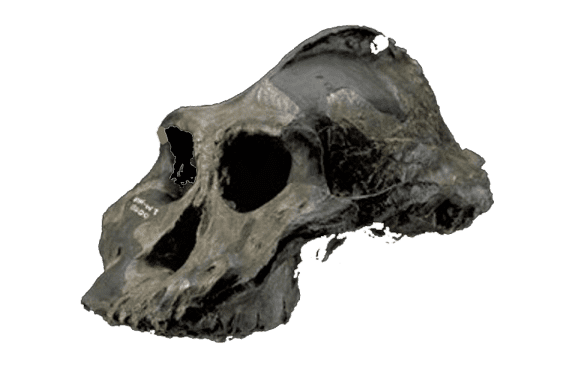
The first specimen of Australopithecus aethiopicus that was discovered is known as Omo 18. Omo 18, also known as Paraustralopithecus aethiopicus was discovered in southern Ethiopia by French archeologists Camille Arambourg and Yves Coppens in 1967. Omo 18 serves as a predecessor to KNM-WT 17000, which was discovered by Alan Walker. The finding discovered in 1985 by Alan Walker in West Turkana, Kenya, KNM WT 17000 (known as the "Black Skull" due to the dark coloration of the bone, caused by high levels of manganese), is one of the earliest examples of robust pliocene hominids. A key feature of Omo 18 is that it has a v-shaped jaw unlike the other Australopithecus species found. Although Omo 18 was the first skull discovered of these species, many paleoanthropologists ignored the finding on the basis that it was similar to the other species of australopithecines. Once KNM-WT 17000 was discovered, interest renewed in Omo 18 and it was reclassified.
Description
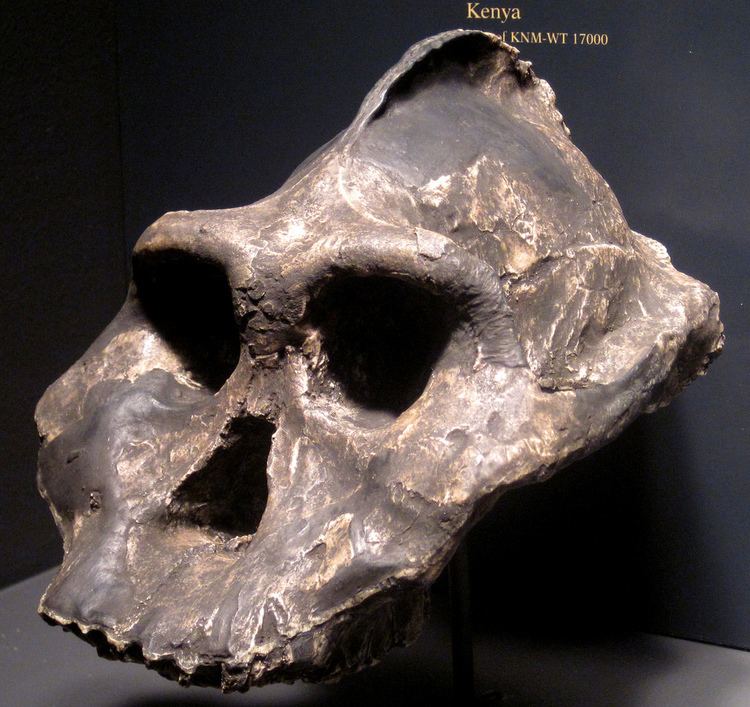
Australopithecus aethiopicus is categorized into a group known as the robust australopithecines. The robust australopithecines are split into three species, Australopithecus aethiopicus, Australopithecus robustus, and Australopithecus boisei. There has been an ongoing debate over the exact phyletic origins of each of these species. The robust australopithecines share many characteristics of the cranium and mandible, perhaps suggesting a shared evolutionary development. Australopithecus aethiopicus has notable features that differ from the other robust australopithecines, including a larger zygomatic arch, extended ramus of the mandible, and a more prognathic face. These differences may have been developed during the evolution of aethiopicus, but it may also suggest that A. aethiopicus has a different phylogenetic history than A. robustus and A. boisei.
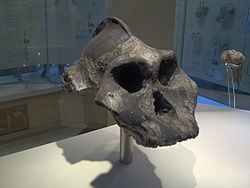
The skull is dated to 2.5 million years ago, older than the later forms of robust australopithecines. Anthropologists suggest that P. aethiopicus lived between 2.7 and 2.5 million years ago. The features are quite primitive and share many traits with Australopithecus afarensis; thus P. aethiopicus is likely to be a direct descendant. With its face being as prognathic (projecting) as A. afarensis, its brain size was also quite small at 410 cc.
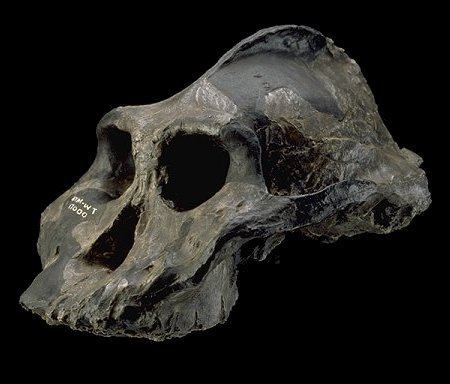
P. aethiopicus was first proposed in 1967 to describe a toothless partial mandible (Omo 18) found in Ethiopia by French paleontologists. Lower jaw and teeth fragments have been uncovered. P. aethiopicus had a large sagittal crest and zygomatic arch adapted for heavy chewing (as in gorilla skulls). Not much is known about this species since the best evidence comes from the "Black Skull" and the jaw. There is not enough material to make an assessment of how tall they were, but they may have been as tall as Australopithecus afarensis.

Paranthropus aethiopicus is considered a megadont archaic hominin; the term megadont referring to the huge size of the postcanine tooth crowns. The initial discovery was a toothless adult mandible in the Shungura formation of the Omo region of Ethiopia in 1967 (Omo 18.18). The ash layers above and below the fossils give an approximate date of 2.3-2.5 mya. There is only one mostly complete skull for this hominin, so it’s hard to make proper inferences about physical characteristics. However, it can be said that the available skull is similar to P. boisei, although the incisors are larger, the face more prognathic, and the cranial base less flexed.
Classification debates
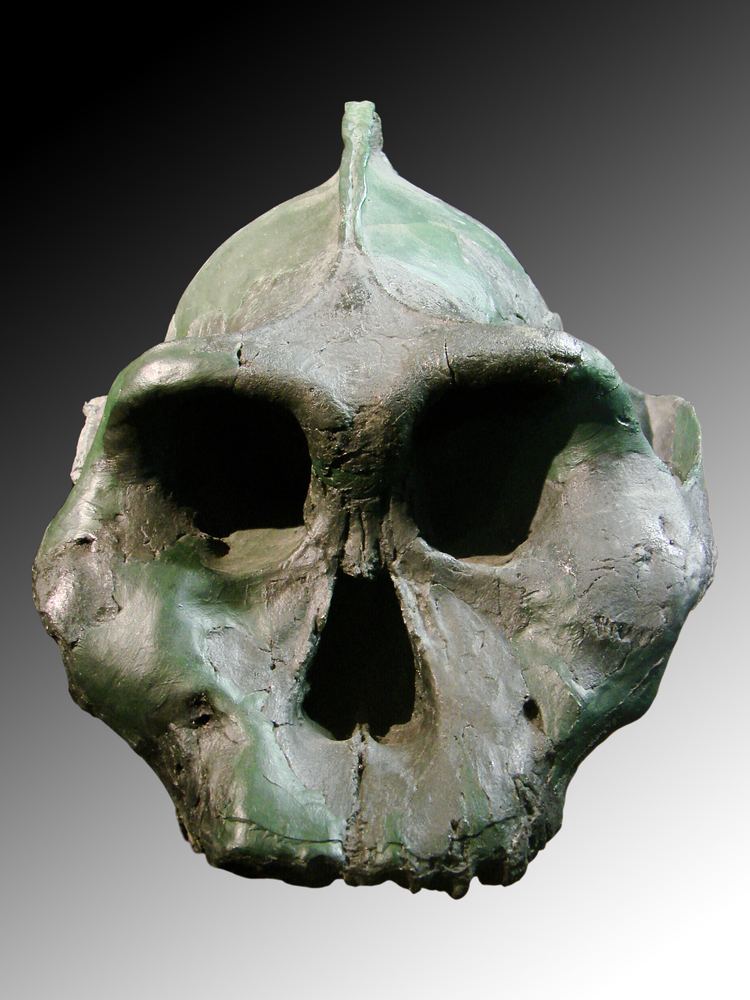
Not all anthropologists agree that P. aethiopicus evolved into both Paranthropus boisei and Paranthropus robustus, since the skull more closely resembles that of A. afarensis. The one clue that makes P. aethiopicus a possible ancestor to both P. boisei and P. robustus is the similarity in jaw size. P. aethiopicus is known to have lived in mixed savanna and woodland. More evidence must be gathered about P. aethiopicus in order to accurately describe its physiology. The bizarre primitive shape of the "Black Skull" gives evidence that P. aethiopicus and the other australopithecines are on an evolutionary branch of the hominid tree, distinctly diverging from the Homo (human) lineage.
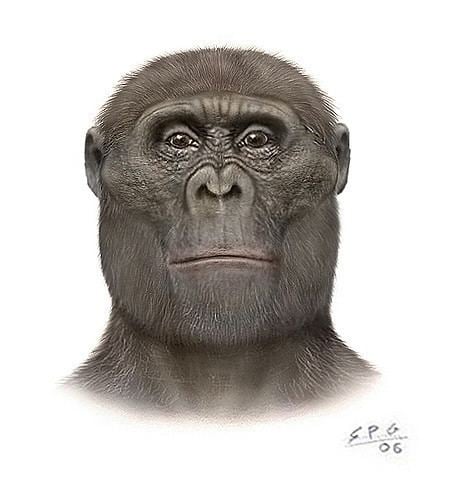
Some scientists disagree with the classification of the black skull as an A. afarensis. They argue that the fact that the black skull “hominids” were alive at the same time as A. afarensis is not enough evidence to group them together into one species. No clear consensus has been reached among the scientific community over the present location of the "black skull" in the hominid tree, some suggesting that it is the link between P. africanus and P. boisei while others maintain that P. africanus and KNM WT-17000 are on separate hominid lines, with P. africanus on the branch that would evolve into modern humans.
